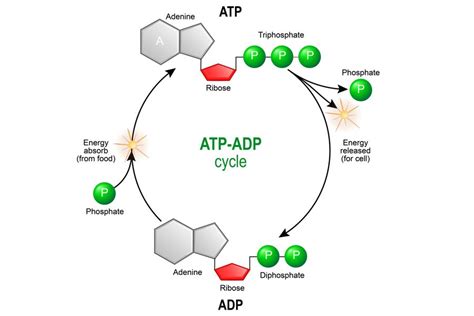How Many Atp Molecules Are Produced In Electron Transport Chain
News Leon
Apr 04, 2025 · 4 min read

Table of Contents
How Many ATP Molecules are Produced in the Electron Transport Chain?
The electron transport chain (ETC), also known as the respiratory chain, is the final stage of cellular respiration. It's a series of protein complexes embedded in the inner mitochondrial membrane (in eukaryotes) or the plasma membrane (in prokaryotes) that facilitate the transfer of electrons from electron donors to electron acceptors via a series of redox reactions. This electron transfer process drives the pumping of protons (H+) across the membrane, creating a proton gradient. This gradient is then used by ATP synthase to produce ATP, the cell's primary energy currency. But precisely how many ATP molecules are produced is a question with a nuanced answer.
The Complexity of ATP Yield Calculation
Determining the exact number of ATP molecules produced per glucose molecule during cellular respiration, particularly from the ETC, is surprisingly complex. Several factors contribute to this uncertainty:
1. The Chemiosmotic Theory and Proton Motive Force:
The ETC doesn't directly produce ATP. Instead, it establishes a proton motive force (PMF). This PMF consists of two components: a chemical gradient (difference in proton concentration across the membrane) and an electrical gradient (difference in charge across the membrane). The PMF drives ATP synthesis via chemiosmosis, where protons flow back across the membrane through ATP synthase, causing it to rotate and phosphorylate ADP to ATP.
2. Variable Proton-to-ATP Ratio:
The precise number of protons required to synthesize one ATP molecule varies depending on the specific conditions and the organism. The commonly cited ratio is approximately 3 protons per ATP, but this is an approximation. Factors such as the membrane potential, temperature, and the specific isoform of ATP synthase can influence this ratio.
3. Shuttle Systems and NADH/FADH2 Production:
The number of ATP molecules produced also depends on the efficiency of the shuttle systems used to transport NADH from glycolysis into the mitochondria. Different shuttle systems have varying efficiencies, impacting the net ATP yield. Additionally, NADH produces more ATP than FADH2 because it enters the ETC earlier, leading to the pumping of more protons.
4. Inhibitors and Uncouplers:
The presence of inhibitors (substances that block the ETC) or uncouplers (substances that disrupt the proton gradient) significantly reduces ATP production. These factors must be considered when calculating theoretical ATP yield.
A Typical Calculation (Approximation)
While a precise number is elusive, a common approximation is used for educational purposes. This approximation simplifies several complexities mentioned above.
Let's break down a simplified calculation:
- Glycolysis: Produces 2 ATP (net) and 2 NADH.
- Pyruvate Oxidation: Produces 2 NADH per glucose molecule.
- Krebs Cycle (Citric Acid Cycle): Produces 2 ATP, 6 NADH, and 2 FADH2 per glucose molecule.
Now, let's consider the ETC:
- NADH: Each NADH molecule theoretically contributes to the pumping of approximately 10 protons across the mitochondrial membrane. With a 3 protons/ATP ratio, this translates to approximately 3.33 ATP per NADH.
- FADH2: Each FADH2 molecule enters the ETC later, contributing to the pumping of approximately 6 protons. This equates to roughly 2 ATP per FADH2.
Let's add up the ATP generated from NADH and FADH2:
- From Glycolysis NADH: 2 NADH * 3.33 ATP/NADH ≈ 6.66 ATP (Consider shuttle system efficiency)
- From Pyruvate Oxidation NADH: 2 NADH * 3.33 ATP/NADH ≈ 6.66 ATP
- From Krebs Cycle NADH: 6 NADH * 3.33 ATP/NADH ≈ 20 ATP
- From Krebs Cycle FADH2: 2 FADH2 * 2 ATP/FADH2 ≈ 4 ATP
Total ATP from ETC (approximate): 6.66 + 6.66 + 20 + 4 ≈ 37.32 ATP
Adding the ATP from glycolysis and the Krebs cycle: 2 + 2 + 37.32 ≈ 41.32 ATP
This is a rounded approximation. In reality, the exact number is usually slightly lower.
Factors Affecting the Actual ATP Yield
The approximate value of 30-32 ATP from the ETC in the simplified model ignores several critical considerations:
- Proton Leak: Some protons leak across the mitochondrial membrane, bypassing ATP synthase, reducing ATP production.
- Shuttle System Efficiency: The malate-aspartate shuttle is more efficient than the glycerol-phosphate shuttle in transporting NADH from glycolysis into the mitochondria. This impacts the actual ATP yield.
- ATP Synthase Efficiency: The efficiency of ATP synthase itself varies depending on various factors.
- Metabolic Conditions: The metabolic state of the cell (e.g., presence of inhibitors, energy demands) can significantly impact ATP production.
Conclusion: A Range, Not a Single Number
The precise number of ATP molecules generated by the electron transport chain is not a fixed value. While simplified models suggest approximately 30-32 ATP per glucose molecule, the actual yield is likely somewhat lower due to various inefficiencies. A more realistic range might be 25-30 ATP, emphasizing the importance of understanding the intricate interplay of factors that determine ATP synthesis. Therefore, instead of focusing on a single precise number, it's crucial to appreciate the complexity of the process and the factors influencing the overall energy yield from cellular respiration. Understanding the chemiosmotic theory, the role of the proton motive force, and the various factors affecting the efficiency of the ETC and ATP synthase are key to comprehending the true nature of ATP production. Focus on the principles rather than chasing a potentially misleadingly precise number.
Latest Posts
Latest Posts
-
8 Scientists Who Contributed To The Atomic Theory
Apr 04, 2025
-
How Do Strict Constructionists And Liberal Constructionists Differ
Apr 04, 2025
-
Breakdown Of Glucose To Pyruvic Acid
Apr 04, 2025
-
Are The Following Two Figures Similar Or Congruent
Apr 04, 2025
-
Python Round Number To 2 Decimals
Apr 04, 2025
Related Post
Thank you for visiting our website which covers about How Many Atp Molecules Are Produced In Electron Transport Chain . We hope the information provided has been useful to you. Feel free to contact us if you have any questions or need further assistance. See you next time and don't miss to bookmark.
